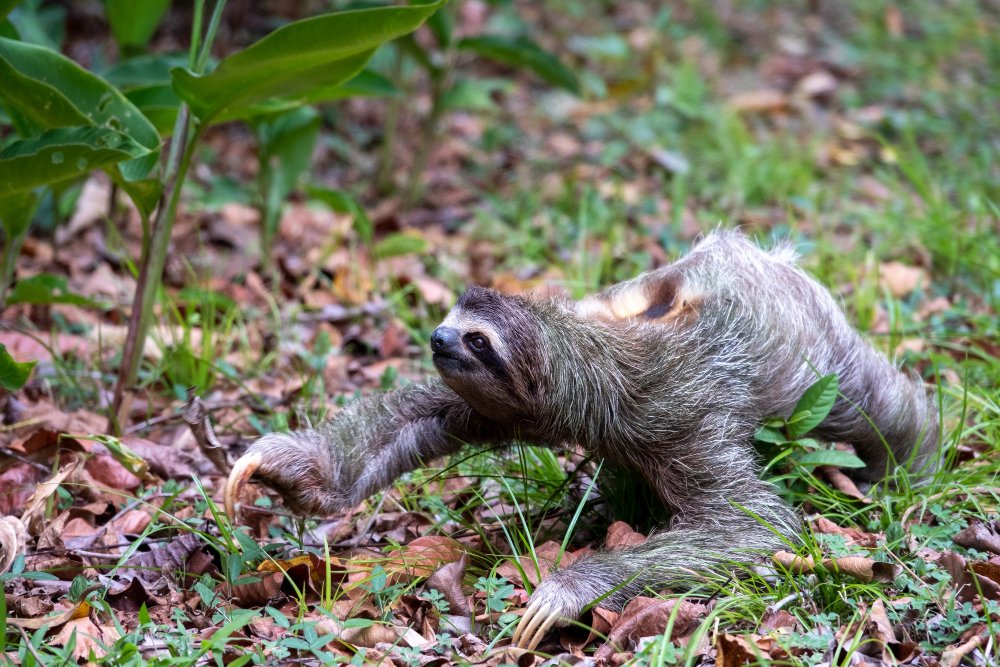
It is important to note that these snakes are highly venomous, but snakebite incidents and severity can vary based on factors such as location, behavior, and human interaction. If you encounter any venomous snake, it is best to exercise caution and seek immediate medical attention if bitten.
Here are 5 of the most venomous snakes in the world:
- Inland Taipan
- Eastern Brown Snake
- Coastal Taipan
- Black Mamba
- King Cobra
- Inland Taipan (Oxyuranus microlepidotus): Found in Australia, the inland taipan possesses the most toxic venom of any land snake. Its venom is highly potent and can cause severe damage to the nervous system if not treated promptly. The Inland Taipan has a slender body and can grow up to 1.8 meters (5.9 feet) in length. It typically has a pale brown or light olive coloration on its back and a cream or light yellow underside. The scales of the Inland Taipan are smooth and glossy. Inland Taipans are generally shy and elusive snakes. They prefer dry and arid habitats, such as the deserts and semi-deserts of central Australia. Their diet mainly consists of small mammals, such as rats and mice. The Inland Taipan mating typically occurs during the spring season. The female Inland Taipan can lay a clutch of up to 12 eggs, which she guards until they hatch. The young snakes are independent from birth and receive no parental care.
- Eastern Brown Snake (Pseudonaja textilis): Native to Australia, the eastern brown snake is responsible for the majority of snakebite-related deaths in the country. Its venom contains potent neurotoxins and blood coagulants. The Eastern Brown Snake has a slender body with a length ranging from 1.5 to 2 meters (4.9 to 6.6 feet). It typically has a variable coloration, ranging from light brown to dark brown or even black, with some individuals exhibiting orange or yellow hues on their bellies. These snakes inhabit a wide range of environments, including grasslands, woodlands, coastal dunes, and farmlands. They are adaptable and can also be found in urban areas, including gardens and suburban areas. Their diet primarily consists of small mammals, including rodents, as well as birds, reptiles, and amphibians.
- Coastal Taipan (Oxyuranus scutellatus): Also found in Australia, the coastal taipan is known for its highly toxic venom. It is considered one of the world’s deadliest snakes due to its potent neurotoxic properties. Adult Coastal Taipans can grow up to 2.5 meters (8.2 feet) in length, although they are usually smaller. They have slender bodies and a generally uniform coloration ranging from light brown to dark olive or grey. These snakes inhabit a variety of environments, including open forests, woodlands, and grasslands. They are often found near water sources and are particularly associated with coastal areas. Their primary prey consists of small mammals, such as rats and mice. They use their highly developed sense of smell and heat-sensing organs.
- Black Mamba (Dendroaspis polylepis): Found in parts of sub-Saharan Africa, the black mamba is renowned for its speed and potent venom. Its neurotoxic venom can cause paralysis and respiratory failure. The black mamba is a relatively large snake with an average length of 2.5 to 3.2 meters (8 to 10.5 feet), although some individuals can reach lengths of up to 4.5 meters (14.8 feet). It has a slender and cylindrical body covered in smooth scales. The coloration of its skin varies from gray to olive or brown. They prefer habitats with suitable shelter, such as tree hollows, termite mounds, and rocky crevices. They can also be found near human settlements, especially in rural areas. Black mambas are diurnal (active during the day) and are known for their speed and agility. They are highly alert and, when threatened, can display an aggressive nature. They are excellent climbers and can swiftly move both on the ground and in trees. The diet of black mambas consists mainly of small mammals, including rodents, squirrels, and other small vertebrates. They are also known to prey on birds and their eggs. To capture their prey, black mambas rely on their speed and quick strikes.
- King Cobra (Ophiophagus hannah): Found in parts of Asia, including India and Southeast Asia, the king cobra is the world’s longest venomous snake. Its venom is primarily neurotoxic and can cause rapid paralysis. The King Cobra is a large snake with an average length of 3 to 4 meters (10 to 13 feet), although some individuals can grow up to 5.5 meters (18 feet). It has a slender body and a distinctive hood. King Cobras are primarily found in the forests and jungles of Southeast Asia, including India, Bangladesh, Myanmar, Thailand, and Indonesia. They inhabit a range of environments, including dense forests, bamboo thickets, and mangrove swamps. The King Cobra is known for its aggressive behavior and is capable of delivering a potent venomous bite. However, it typically prefers to avoid confrontation and will try to escape when threatened.The primary diet of the King Cobra consists of other snakes, including venomous species. It has specialized teeth and powerful jaws that allow it to capture and devour other snakes, including pythons and even smaller King Cobras. It also feeds on lizards, rodents, and occasionally birds and their eggs.
Other most venomous snakes in the world are Russell’s Viper (Daboia russelii), Saw-scaled Viper (Echis carinatus), Philippine Cobra (Naja philippinensis), Many-banded Krait (Bungarus multicinctus).



